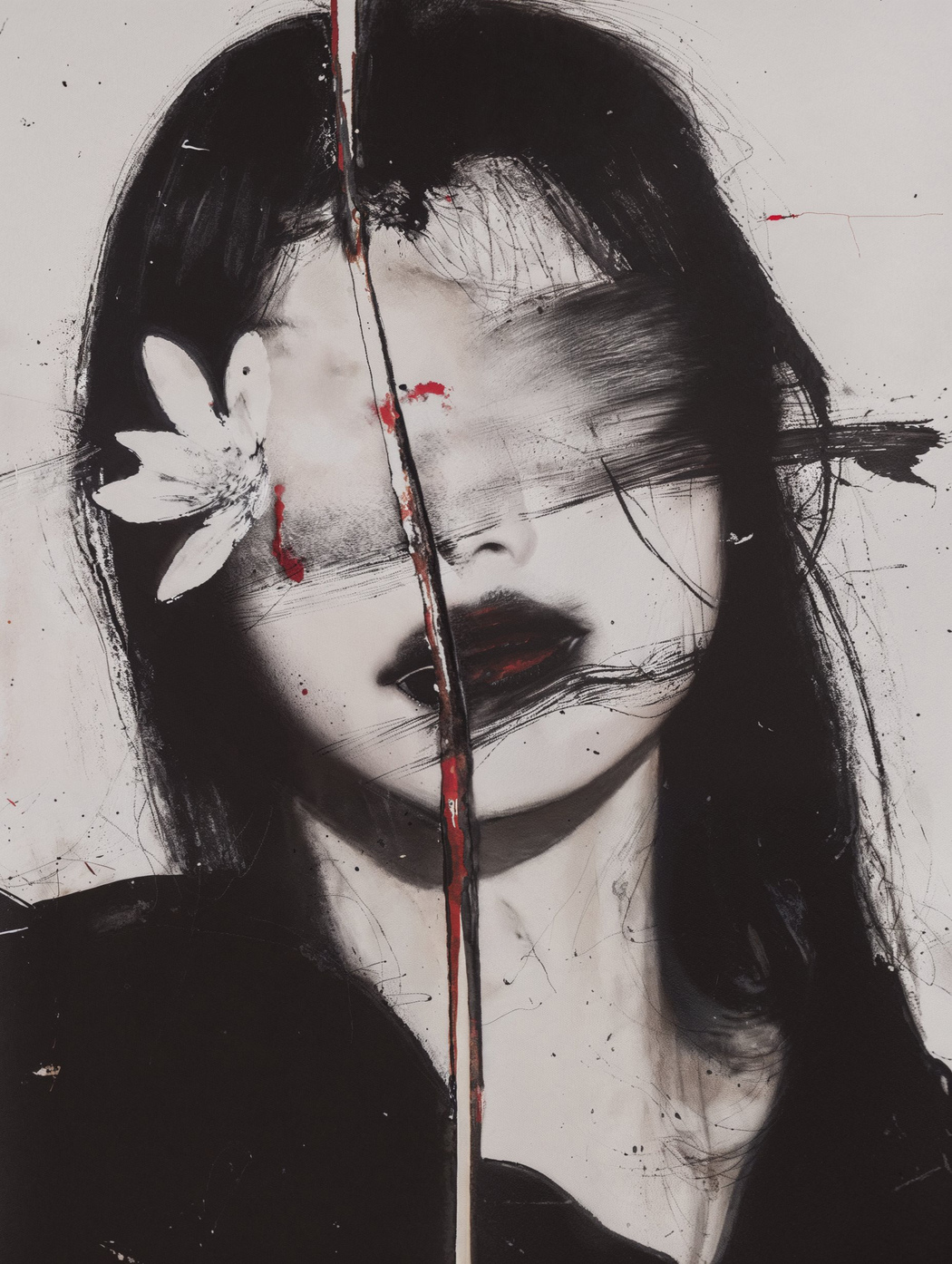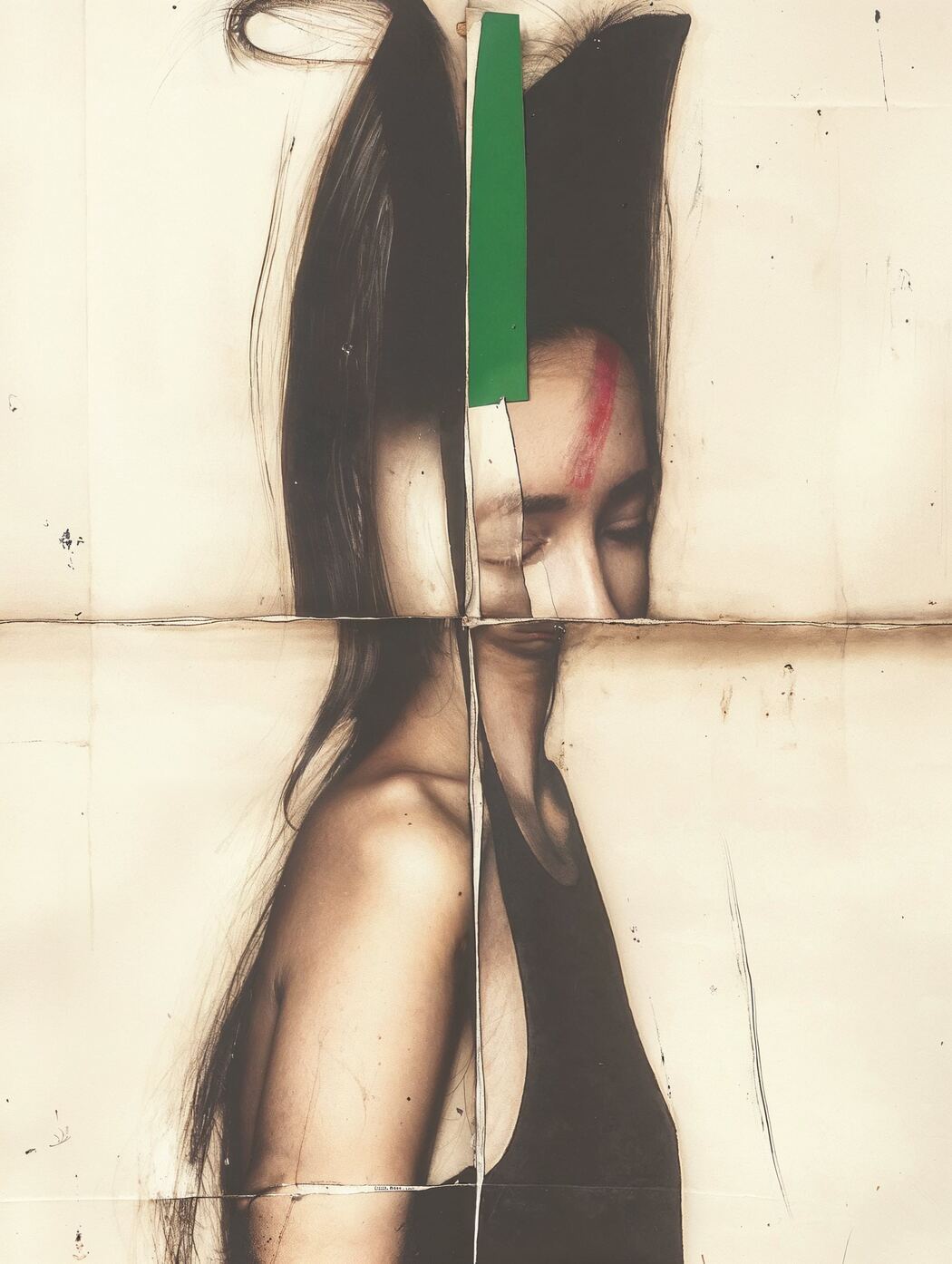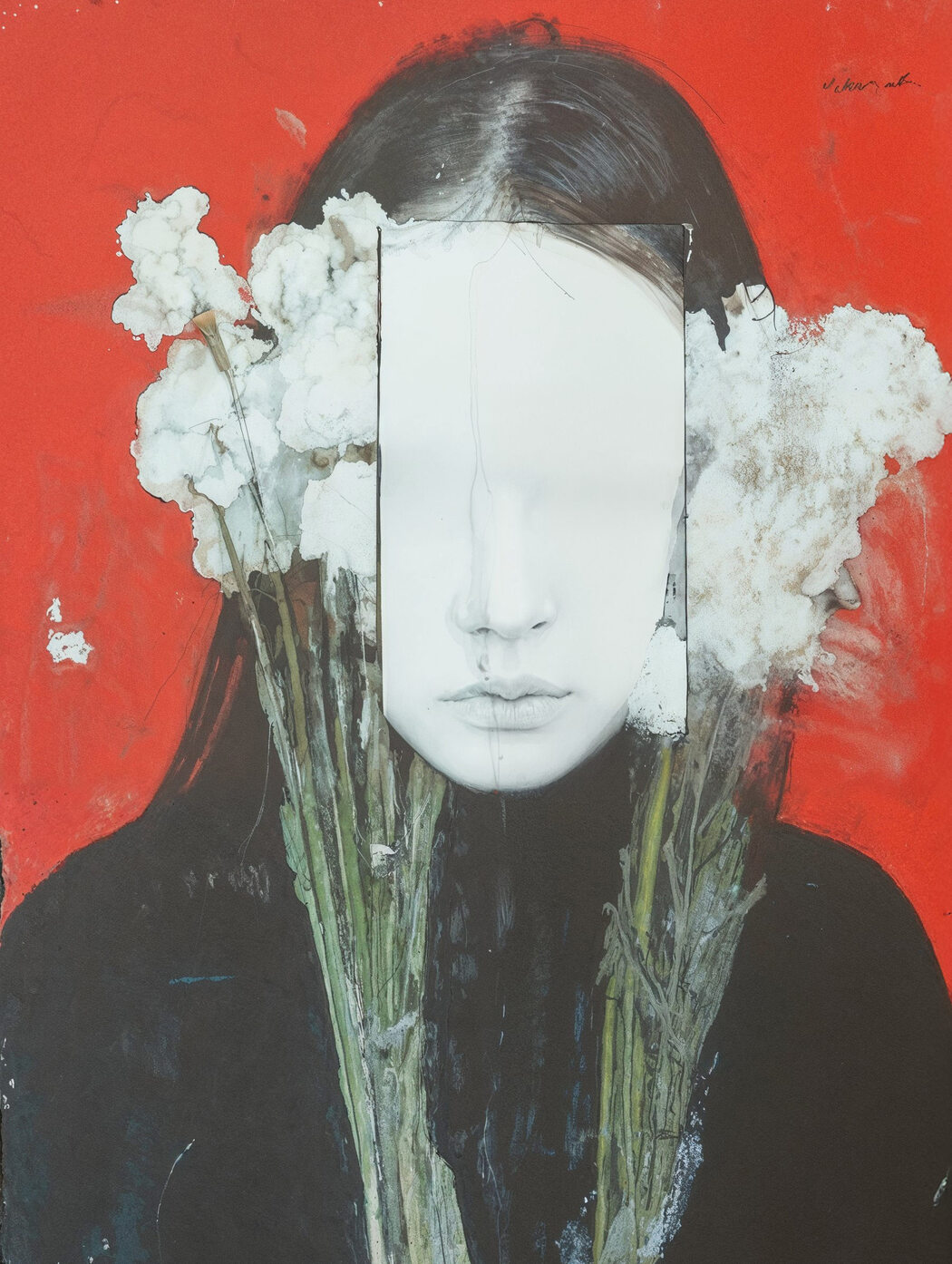Richard Gibson
Where do you live: Spain, Valencia
Your education: Specialist in economics, master’s degree in media communications, specialist in graphics and design
Describe your art in three words: “Expanding the boundaries of aesthetics”
Your discipline: CG generalist, motion designer, creative producer
Website | Instagram
Your works blend photography, painting, and digital manipulation in a very visceral way. What is your process for creating these hybrid images?
One day I realized that the photographic medium alone was not enough for me to express a visual idea and emotions. While studying modern art, I learned how Marcel Duchamp added a moustache to a postcard of the Mona Lisa in 1919, combining drawing and painting within the framework of art, and creating a new statement. This knowledge gave me the desire to complement the photograph with a drawing, and later, studying photography and collages, I began to experiment with the print itself, crumpled it, cut it, even set it on fire. This expanded the boundaries of my expressive language. And digital manipulation and processing have been natural since childhood, as is drawing.
How has your background in video design, directing, and marketing influenced your fine art practice?
Great question. My commercial experience became more and more burdensome to me over the years, as I moved away from the arts while doing marketing. My passion for the history of painting, photography and contemporary art helped me resist the advertising I was creating. The desire to leave a mark on the arts by expanding its boundaries was much greater than the desire to add another creative video to my portfolio. I would say that my career has forced me to creatively sublimate myself in art.
 Richard Gibson | Collage series | 2024
Richard Gibson | Collage series | 2024
You mention the Kuleshov effect in your artist statement. How do you apply this cinematic concept in your collages?
In photography, I like diptychs that provide visual metaphors. For example, I placed a photo of a bird taking flight next to a portrait of a girl, which gave the heroine in the photo notes of freedom, lightness, that is, a metaphorical reading of the portrait arose. In my collages, I most often combine female images with expressive drawings, paint drips, I can crush the print itself with force, apply author’s techniques that complicate the original photograph. It seems that I have visually learned to add expression and express my attitude, and I like this technique.
Many of your portraits feature erased, fragmented, or distorted faces. What themes or emotions are you aiming to evoke through this?
I owe my techniques with deconstruction to Robert Rauschenbersch and his legendary work “Erased de Kooning Drawing”. Deconstruction allows me to leave something unsaid, to open the viewer’s gestalt, giving his imagination space for interpretation and fantasy. Distortion of the face also allows me to move away from individuality towards a stereotypical familiar image, leaving the use of a photo of a specific person as a symbol, something common and inherent to all of us. Thoughts about our identity are revealed in the book “Alien Face” by Kobo Abe. The unsaid and incomplete are much more interesting than a finished, understandable image.
 Richard Gibson | Collage series | 2024
Richard Gibson | Collage series | 2024
What role does femininity and the deconstruction of form play in your visual language?
The female image and female role in the modern world are changing most of all, I am interested in playing with feminine images, for me they will always conceal mystery, desire, danger, the unknown.
How do you integrate AI tools like neural networks and AI video into your artistic process without losing the personal, emotional core?
Please remember Marcel Duchamp and his “Fountain”. He invented the relief-made by bringing the toilet into the sphere of art, giving it the author’s meaning. I think that neural networks are an excellent relief-made, with thousands of variations, but it is the choice from an infinite number of images that creates the author’s statement. And it correlates with the ideas and emotions of the author. We can get to know a person by studying his collection of something. Or, for example, simply by studying the interior of his home, where there will be hundreds of traces of “choice”. Neural networks provide a space of options, but the author’s choice is always unique. For the first time in our history, we are no longer trying to answer the question “How was this created”, and the answer to the question “What do we want to say” comes to the fore. The dictatorship of many years of art education has finally fallen. Now every person has gained the right to vote, everyone can enter the “God mode” and create their own artistic Universe. And it will be unique. Like our homes, our choice, our taste, our focus of attention. An artist is now like a curator, carefully creating his personal exhibition, expressing his inner world visually, without limiting himself to the framework of artistic skills. Without unnecessary importance, without the desire for approval of our drawing skills, people are able to open up and be heard with the help of neural networks. We are judged in society by our taste and choice – what clothes we wear, what car we drive, what we listen to and where we dine – all life is a series of choices, and now everyone is able to express their taste and choice thanks to neural networks. “What to create” and not “How to create” is much more important, finally.
 Richard Gibson | Collage series | 2024
Richard Gibson | Collage series | 2024
You reference both Impressionism and Color Expressionism—how do these historical movements shape your contemporary visual vocabulary?
There are about 10 series in my creative portfolio. In most of them you can see color beyond the reasonable, wild fauvism, color as the main way of influencing the viewer, influencing even before understanding the image, shocking and surprising color. Impressionism is about the author’s perception of what he saw, in fashion photography, for example, I used dozens of lenses, prisms, glasses to transform reality. I never wanted to just take photos, reflecting raw reality. One of my hobbies is cooking, so I wanted to “cook” reality, artistically rethink it through the camera, express my attitude and leave something unsaid. But when I reached the level of collage, I really had enough techniques to create art, and not just “steal” this reality by pressing the button of the camera.


Leave a Reply